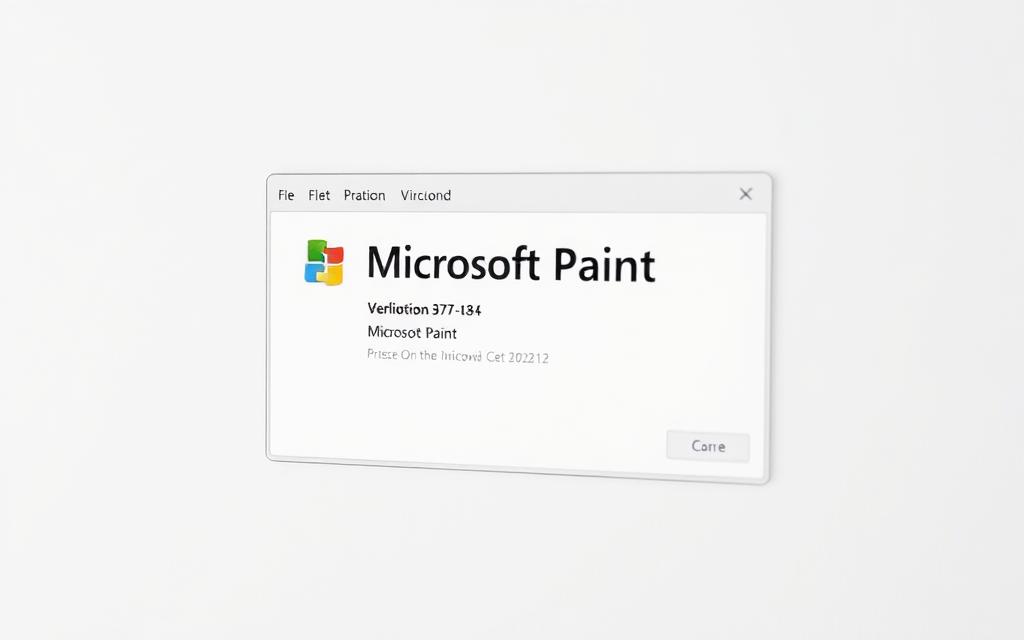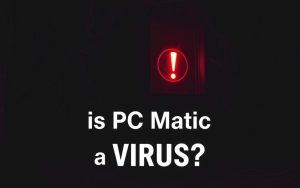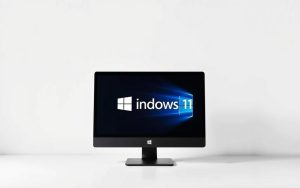Table of Contents
Microsoft Paint remains a staple graphics tool for Windows users. Whether troubleshooting issues or accessing new features, knowing the installed version ensures smooth operation.
The classic Paint application differs from Paint 3D, with varying tools and compatibility requirements. Modern Windows 10/11 systems typically include both, while older OS versions may only support legacy editions.
Version checks prove valuable when:
- Resolving software conflicts
- Accessing version-specific tools
- Preparing for system upgrades
Three reliable methods exist to verify your current installation. These include checking through the app interface, Windows settings, and file properties. Each approach works across different Windows releases.
Understanding your graphics software version helps maintain productivity. The following sections detail quick verification techniques for any Windows environment.
Introduction to Microsoft Paint Version Checking
Since its debut in 1985, Microsoft Paint has evolved into a versatile graphics tool. Originally bundled with Windows 1.0, this software became a household name for basic image editing.
Modern Windows 10 and 11 systems include Paint in the Start Menu under Windows Accessories. Build 14393 (2016) introduced significant updates, while newer iterations refined performance and features.
Key differences between versions:
- RAM usage: Classic Paint consumes less memory than modern builds
- Interface: Ribbon design replaced the traditional toolbar post-2010
- Launch speed: Older versions open faster on legacy hardware
Understanding these variations ensures optimal use of this enduring tool. Whether for nostalgia or productivity, Paint’s adaptability keeps it relevant.
How Do I Identify My Computer’s Version of Paint
Windows users can confirm their graphics tool version through multiple approaches. Whether troubleshooting or exploring features, these methods work across Windows 10 and 11.
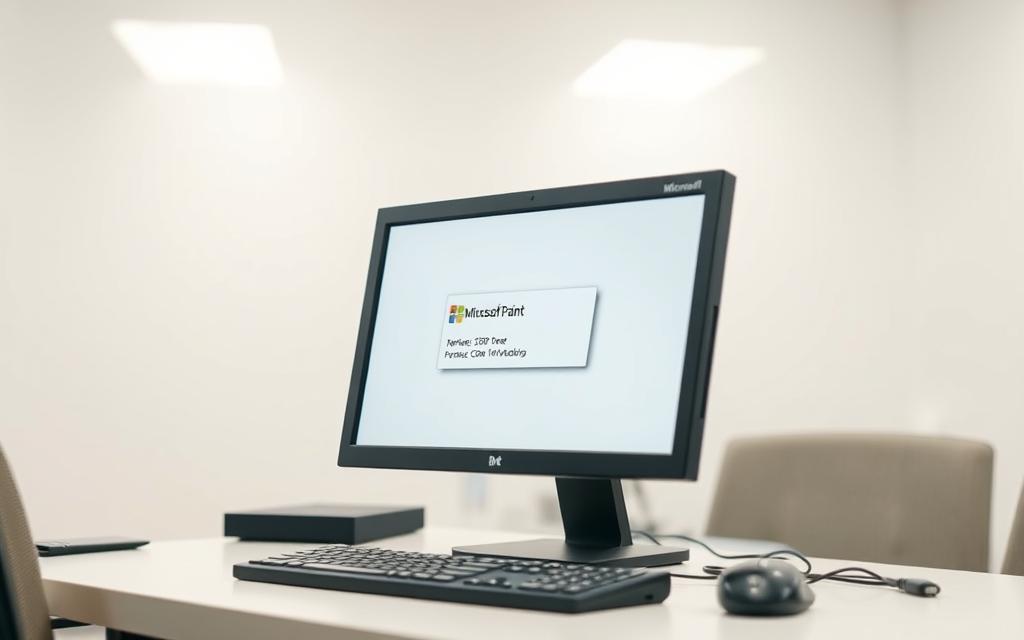
Method 1: About Dialog
Open Microsoft Paint via the Start Menu. Navigate to:
- File > Help > About Paint
A pop-up displays the version number and copyright details. Older builds may show simplified information.
Method 2: File Properties
Locate the executable file:
- Press Win + R, type
mspaint, then right-click the taskbar icon. - Select Open file location.
- Right-click mspaint.exe > Properties > Details tab.
The Product Version field reveals build-specific data. Admin rights may be required for system files.
Method 3: Command Line
For advanced users:
Open Command Prompt or PowerShell, then run:
wmic datafile where name="C:\\Windows\\System32\\mspaint.exe" get version
This returns the exact version without launching the app. PowerShell alternatives include Get-ItemProperty for deeper analysis.
Locating Microsoft Paint on Your System
Accessing Paint differs slightly between Windows 10 and 11. The Start Menu remains the primary gateway, but navigation varies by OS build. Modern updates reshaped how users find this classic app.
Windows 10 Search Method
In Windows 10, type “Paint” in the Start Menu search bar. Results instantly show the legacy desktop version. Alternatively:
- Open Windows Accessories folder in the menu
- Pin to taskbar via right-click options
Windows 11 Access Differences
Windows 11 separates classic Paint and Paint 3D in search results. The Start Menu groups both under “P” apps. Advanced users can:
- Press Win + R, enter
mspaint.exe - Check
C:\Windows\System32\for the executable
Taskbar pinning works identically across both OS versions. For frequent use, this ensures one-click access.
Understanding Different Paint Versions
Windows offers two distinct Paint applications with unique capabilities. Classic Paint and Paint 3D cater to different needs, from simple edits to 3D modeling. Recognizing their differences optimizes workflow efficiency.
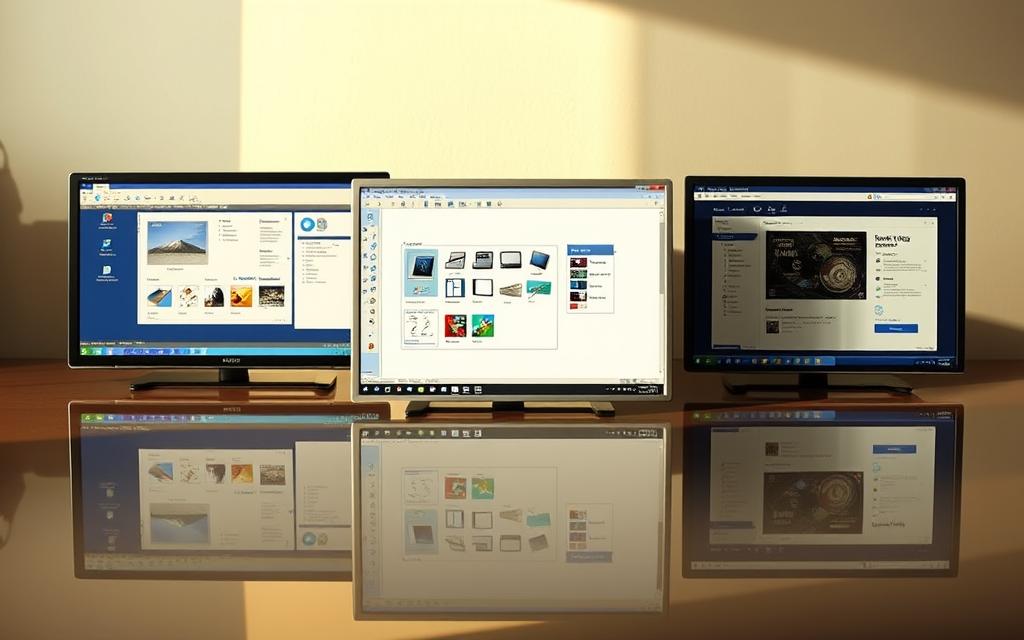
Classic Paint vs. Paint 3D
The traditional Microsoft Paint retains its minimalist toolbar, ideal for quick edits. Paint 3D introduces a ribbon interface and advanced tools like 3D shapes. Key contrasts include:
- File formats: Classic supports BMP/JPEG; Paint 3D adds GLB and 3MF for models
- RAM usage: 15MB (Classic) vs. 100MB+ (Paint 3D)
- Snap behavior: Classic lacks window docking features in newer versions
Version History Across Windows Releases
Significant updates marked each paint windows iteration:
- Windows 7: Final classic edition with basic tools
- Windows 10: Introduced Paint 3D alongside legacy app
- Windows 11: Unified search results for both versions
Language support expanded from 10 to 100+ MUI packages in modern builds. Choose the right version for your hardware and project needs.
Alternative Methods for Version Identification
Advanced users can uncover Paint version details through alternative system diagnostics. These approaches provide technical insights beyond standard interface checks. They’re particularly useful for IT professionals managing multiple workstations.
Checking Through System Information
Windows includes built-in utilities for comprehensive software analysis. The System Information tool offers detailed component data through these steps:
- Press Win + R, type
msinfo32.exe - Navigate to Components > Multimedia > Graphics
- Locate Microsoft Paint in the listed applications
For command-line alternatives, PowerShell delivers precise results. Execute:
Get-AppxPackage Microsoft.Paint | Select Version
Using Third-Party System Tools
Specialized system utilities like Belarc Advisor generate complete hardware/software profiles. These products often detect:
- Exact build numbers of installed applications
- Registry entries at
HKEY_LOCAL_MACHINE\SOFTWARE\Microsoft - Digital signatures of executable files
DirectX diagnostics (dxdiag.exe) report relevant graphics components. The display tab shows associated app versions alongside driver information.
Troubleshooting Version Check Issues
Encountering issues while checking your Paint details? Common problems have straightforward solutions. System conflicts or corrupted files often prevent version verification. These steps resolve most app-related errors efficiently.
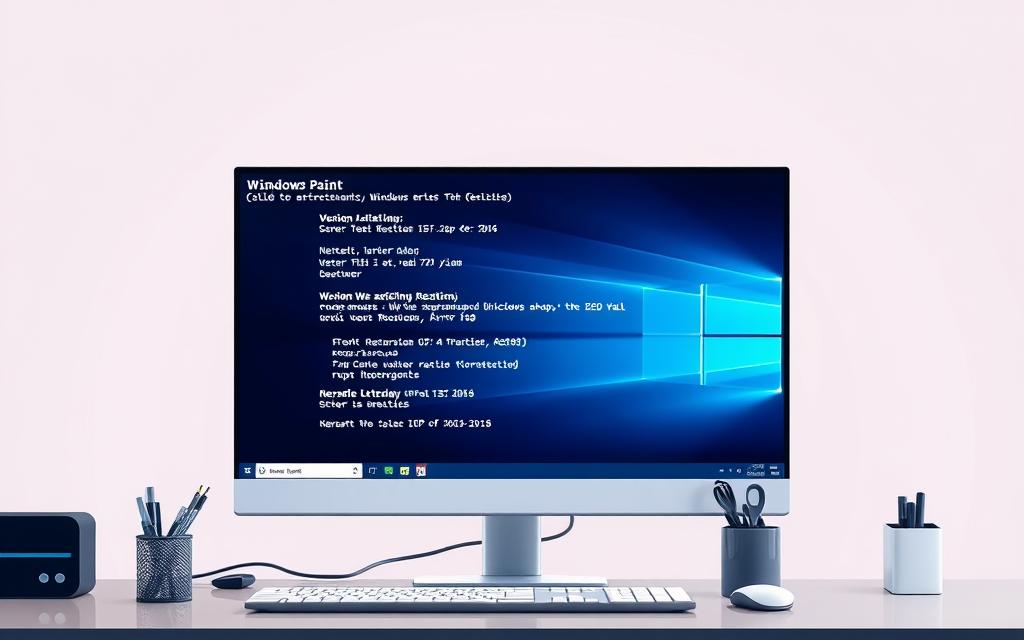
Resolving Launch Failures
When Paint refuses to open, begin with a repair via Settings > Apps > Microsoft Paint. Select Modify to refresh the installation without data loss. For deeper issues:
- Run SFC scan in Command Prompt (
sfc /scannow) - Test in Safe Mode to isolate third-party conflicts
- Check App execution aliases in Advanced Settings
Handling Missing Version Data
If version details don’t appear, disable Paint 3D via Optional Features. This eliminates package conflicts between the two applications. Alternative solutions include:
- Performing a clean boot to identify interfering processes
- Reinstalling via Microsoft Store download
- Verifying system integrity with DISM tools
Persistent errors may require checking Event Viewer logs. Navigate to Windows Logs > Application for specific file failure details.
Additional Paint Version Features to Explore
Beyond basic version checks, Paint offers hidden features that enhance editing workflows. These capabilities often go unnoticed but provide professional-grade color precision and image manipulation tools. Understanding these extras maximizes productivity across different Windows releases.
Color Code Identification
The color picker tool delivers advanced functionality for designers. Press ALT+PRTSCN to capture active windows, then analyze specific pixels for RGB/Hex values. This proves invaluable when matching colors across branding materials or digital assets.
Built-in conversion translates between color models automatically. Later versions like Windows 11’s Paint 3D expand this with:
- Pantone code approximations
- HSL sliders for hue adjustments
- Transparency percentage displays

Advanced Editing Tools by Version
Selection tools evolved significantly between Windows 10 and 11. The newer magnetic lasso automatically snaps to image edges, while classic versions require manual tracing. Layer support remains exclusive to Paint 3D for complex compositions.
Undo stacks expanded from 15 actions to 50 in recent builds. Plug-in integration brings sticker libraries and CGI tools to modern versions. These differences matter when:
- Editing high-resolution graphics
- Creating multi-element designs
- Working with screen captures
Explore these features through the View ribbon tab. Toggle advanced options to unlock each version’s full potential.
Conclusion
Paint version awareness helps optimize performance across Windows environments. The About dialog, file properties, and command-line methods provide reliable verification.
Match your software build to troubleshooting guides for faster issue resolution. Power users may prefer legacy editions for lightweight operation on older hardware.
Explore hidden features like color code tools for precision editing. Schedule version checks after major OS updates to maintain compatibility.
Enterprise teams should document Windows accessory versions across workstations. This classic tool remains essential for quick edits when managed properly.
FAQ
Where can I find Microsoft Paint on Windows 10?
Open the Start Menu, type “Paint” in the search bar, and select the app from the results. Alternatively, navigate to Windows Accessories in the Start Menu.
How do I check the version of Microsoft Paint installed?
Open Paint, click Help in the menu bar, then select About Paint. The version number appears in the dialog box.
What’s the difference between classic Paint and Paint 3D?
Classic Paint offers basic image editing, while Paint 3D includes 3D modeling tools. Both come pre-installed on modern Windows versions.
Why can’t I find version details in Paint?
Older versions may lack an About option. Right-click the Paint shortcut, select Properties, and check the Details tab instead.
How do I access Paint on Windows 11?
Press Win + S, type “Paint,” and open it from the search results. It’s also available under All Apps in the Start Menu.
Can I download newer versions of Microsoft Paint?
Updates come via Windows Update. Ensure your OS is current to get the latest features and bug fixes.
What advanced tools are available in newer Paint versions?
Recent updates include better color picker options, improved image resizing, and support for transparency layers.
How do I run Paint from Command Prompt?
Type mspaint in Command Prompt or Run (Win + R) to launch it instantly.


